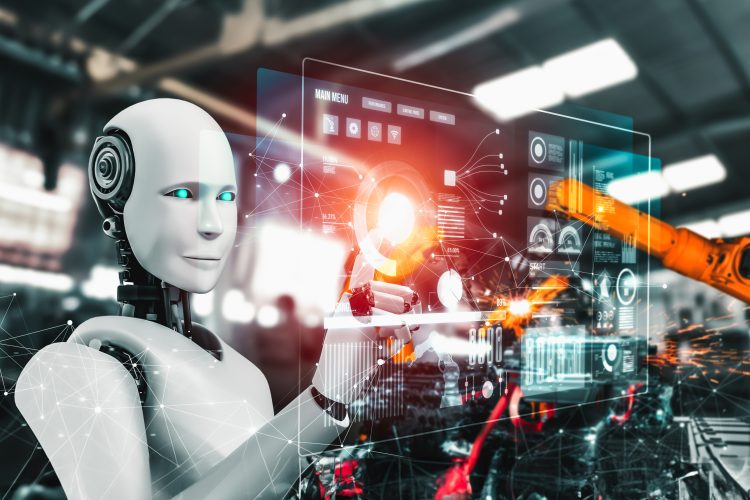Improving passengers’ journey experiences, with airport automation
- Like
- Digg
- Del
- Tumblr
- VKontakte
- Buffer
- Love This
- Odnoklassniki
- Meneame
- Blogger
- Amazon
- Yahoo Mail
- Gmail
- AOL
- Newsvine
- HackerNews
- Evernote
- MySpace
- Mail.ru
- Viadeo
- Line
- Comments
- Yummly
- SMS
- Viber
- Telegram
- Subscribe
- Skype
- Facebook Messenger
- Kakao
- LiveJournal
- Yammer
- Edgar
- Fintel
- Mix
- Instapaper
- Copy Link
Posted: 5 April 2024 | Christopher Summers | No comments yet
Chris Summers, IT Project Manager at Austin-Bergstrom International Airport, wrote exclusively for International Airport Review’s Issue 4 in 2023, on how robotics and automation can help improve passenger experience and operational efficiency of terminal operations.


Enhancing passenger experience with automation at Austin Bergstrom International Airport.
Automation is changing the air travel industry, in ways that were unthinkable just 10 years ago. Can you have a robot bartender or coffee barista? Yes. How about an autonomous food and beverage delivery robot, who delivers to you both in a café and to your gate? Yes. What about a robot who preps fast food? Of course! And these are just the ones passengers can see inside the terminal.
With increased electrification, enhanced visual processors, and faster computers, technology is opening new frontiers of air travel.”
What about autonomous luggage tugs, catering trucks and other ground support equipment? Yes, indeed. Automation and robotics will raise the standard of service by allowing the decreasing number of human staff that airports are able to recruit, to be able to focus on specific issues and on travellers who need personalised attention.
For seasoned travellers, and those who dislike waiting in line, there is even an automated check‑in and baggage drop so you may never have to interact with a human, if you don’t want to. Adding a permanent radio-frequency identification (RFID) tag inside your bag will eliminate this need and the paper waste associated with printing tags. Increased artificial intelligence (AI) and robotics in the baggage sorting and delivery chain will greatly reduce mishandled bags. As an additional bonus you can also track the exact location of your bag with a ‘where’s my bag?’ tracker app.
Speaking of travelling through the airport; once you drop your bag (either at home, at a hotel or a car rental centre) you can then use your airport app to navigate and find food, beverage, shops, or restrooms (for your four-legged companion too!). This is of course, after you smile your way through security. For the visually impaired, newer apps can provide audio directions and enhanced video imagery and augmented reality (AR) to steer you to your destination.
Every airport wants to have the greatest possible security while balancing the protection of personal intrusion and mitigating delays. With newer document scanners, and the initial testing of border security biometric scanners, security staff are enabling faster and more accurate security screening. For international travellers, biometric boarding is now widely available, where a passenger’s face is both their passport and boarding pass. Studies on the efficiency and accuracy of biometric boarding estimates a 30-50% reduction in boarding times. Airports around the world have piloted all these automation innovations and many are now fully implemented.
Every airport wants to have the greatest possible security while balancing the protection of personal intrusion and mitigating delays.”
While you’re waiting for your flight with all that time that you’ve saved by not waiting in check-in or security lines, you might take in some of the curated VR/AR art exhibits throughout the airport or take in an actual live performance, held on one of many stages.
Automation innovation is not restricted only to landside operations. With increased electrification, enhanced visual processors, and faster computers, technology is opening new frontiers of air travel. With automated smart vehicles and enhanced video analytics aiding airside operations, airports will be able to deliver better aircraft service and faster turnover. Innovation is also reaching inside the aircraft; many airlines are also offering Wi-Fi and in-seat mobile device chargers as well as the ability to stream content on personal devices.
This automation innovation also extends to non‑traditional aircraft. Many airlines are also partnering with other electronic vertical take-off and landing (E-VTOL) aircraft manufacturers for electric air taxi service. These can be available anywhere from 200‑300 miles from the airport/land and can be located either airside, landside or at the fixed‑based operator (FBO). As of now, these are all piloted aircraft; however several manufacturers are simultaneously testing the possibility of automated systems.
With all the new vehicle and equipment electrification, airports also have higher energy needs. Many airports around the world are adding solar to buildings, car parks and open acreage to not only meet new operational and administrative needs, but, in some cases, to also supply power to local businesses. Consider the fact that airports are, in effect, small self‑contained cities with needs for power, water, recycling, composting and trash collection. There are even automated trash assistants in Vancouver International Airport, appropriately called Oscar.


CREDIT: Austin Bergstrom International Airport
About the author – Christopher Summers
Christopher Summers received his private pilot license while serving in the USAF as a Technology Project Manager and Business Analyst. Recently, he was an IT Project Manager at Austin-Bergstrom International Airport. He loves assisting volunteer organisations like Pilots-n-Paws and Dog Is My Copilot.
Issue
Related topics
Autonomous Technology, Digital transformation, New technologies, Passenger experience and seamless travel


















